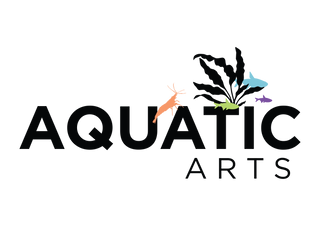Amano Shrimp - Care Guide
After Red Cherry Shrimp, Amano Shrimp are the second most popular type of dwarf shrimp in the hobby - and for good reason! Not only are they very attractive with their translucent, silver-blue bodies, but they are also widely known as the single best algae eating shrimp in the world. They even eat that notoriously pesky hair algae, thread algae, and beard algae!

Overview
Amano Shrimp are named for the aquarist Takashi Amano, who first introduced them to the aquarium hobby after discovering their ability to obliterate algae in aquariums. Also known as Yamato Shrimp, this species is found in the wild in Japan, as well as parts of Korea and Taiwan. They are extremely difficult to breed, so most Amano shrimp are caught in the wild and then sold to stores and individual hobbyists.
Their reputation as excellent algae eaters makes these shrimp ideal candidates for planted tanks. Amano Shrimp are totally peaceful, and are great additions to shrimp tanks with other dwarf shrimp species because they will not interbreed with other dwarf shrimp or eat shrimp fry. Though their translucent coloration does not make them stand out as much as the other, brighter-colored varieties of dwarf shrimp that we offer, they are beautiful in their own subtle yet elegant way. Their clear, light blue bodies are speckled with small, dark red or brown dots that form interesting patterns, and they often feature an opaque blue or brown stripe along their backs.
Species
Caridina multidentata
Size
These shrimp grow larger than any other dwarf shrimp in the hobby, attaining a maximum size of 2 inches in length or more.
Recommended Tank Parameters
- pH level range: 6.0 - 7.6
- Temperature range: 60° - 80° F (15.5° - 27° C)
- Water type: kH 0 - 10; gH 4 - 14; TDS 80 - 400
- Notes from the owner:
- All dwarf shrimp prefer to live in tanks with live aquatic plants (such as java moss, baby tears, green cabomba, etc). There are a few reasons for this:
- 1. Dwarf shrimp love the cover that plants provide them
- 2. They love to graze on the plants for algae
- 3. Plants help keep the water clean for the shrimp
- All dwarf shrimp prefer to live in tanks with live aquatic plants (such as java moss, baby tears, green cabomba, etc). There are a few reasons for this:
Compatibility
Safe: Small, peaceful fish and invertebrates. Good choices are:
- Other dwarf shrimp
- Small, peaceful fish
- Asian Stone Catfish
- Bushynose Plecos
- Corydora Catfish
- Danios
- Guppies
- Hillstream Loaches
- Otocinclus (safe to keep with breeding shrimp as well)
- Ram Cichlids
- Tetras (small tetras only)
- Filter Shrimp
- Vampire Shrimp
- Singapore Flower Shrimp
- Snails (all types)
- Ramshorn Snails
- Mystery Snails
- Nerite Snails
- Sulawesi Snails (aka Rabbit Snails)
Unsafe: Any fish or invertebrate large and/or aggressive enough to eat a dwarf shrimp. Examples:
- Angelfish
- Barbs (the aggressive kinds)
- Bettas
- Catfish (large)
- Cichlids
- Crayfish (most types)
- Discus
- Pacu
- Plecos (large)
- Golfish (large)
- Gourami (large)
Feeding
As mentioned above, Amano Shrimp have quite the appetite for algae, but they will also eat leftover fish food and detritus on the floor of your aquarium. If there is not a lot of algae in your tank, they can be fed a variety of foods to supplement their diet, including shrimp pellets, fish flakes, algae wafers, bloodworms, and blanched vegetables (such as zucchini or spinach). Since Amano Shrimp are larger than all other types of dwarf shrimp, they will need to be fed a bit more.
Warning! Avoid any food product, medication, or plant fertilizer that contains Copper of any form. Copper is toxic to invertebrates. Many commercial fish foods, medications, and plant fertilizers contain copper or more commonly copper sulfate. Always look at the ingredient list for any product going into the aquarium to ensure they are copper free.
Breeding
As mentioned above, Amano Shrimp are extremely difficult to breed in aquariums. In fact, they will not breed at all in freshwater, which is the type of water in which most aquarium hobbyists keep them. Even if you receive a pregnant female Amano shrimp, you will likely find that her eggs never produce offspring. Brackish water (which is a mix of fresh water and sea water and thereby has more salinity than fresh water, but less than sea water) is required for Amano shrimp to reproduce successfully. Even with the correct salinity of water, it is still extremely rare for hobbyists to successfully breed these shrimp due to the fragile nature of their hatched larvae and the special, detailed care required by them.
What to Expect from Us
We generally ship young adult shrimp that are ½ to 1 inch in length.
All Aquatic Arts brand plants and animals come with a 100% live arrival guarantee, plus free email support directly from the owners! All that we require is that you send us a clear, digital picture of the unopened bag of DOAs, and we will replace them free of charge.

